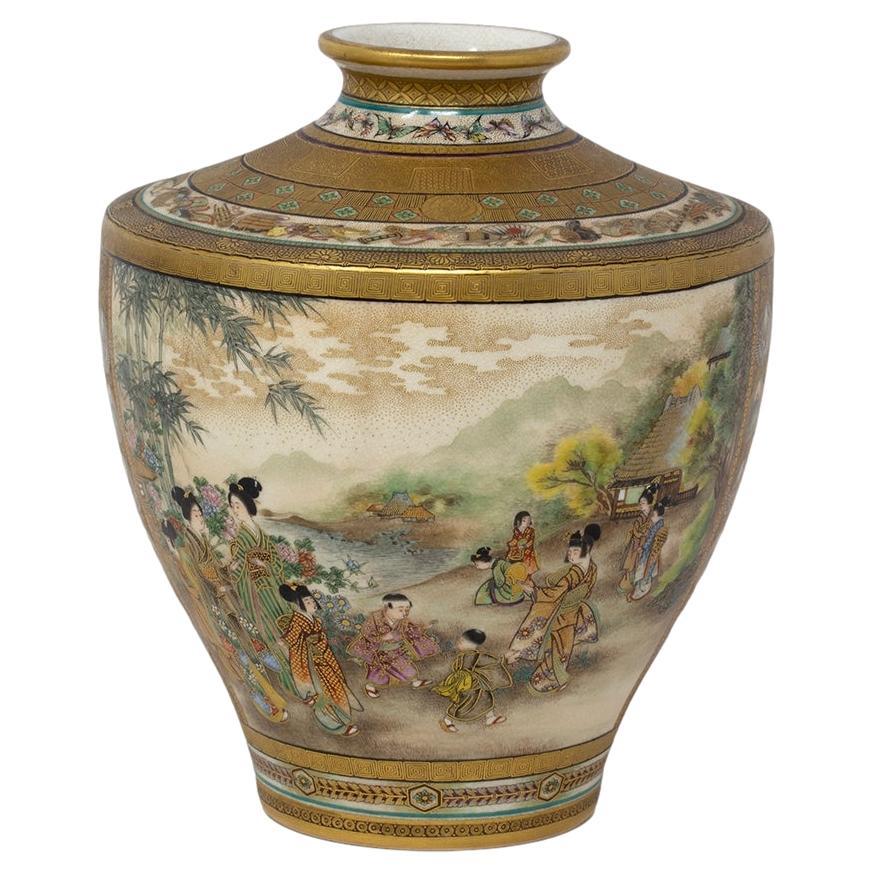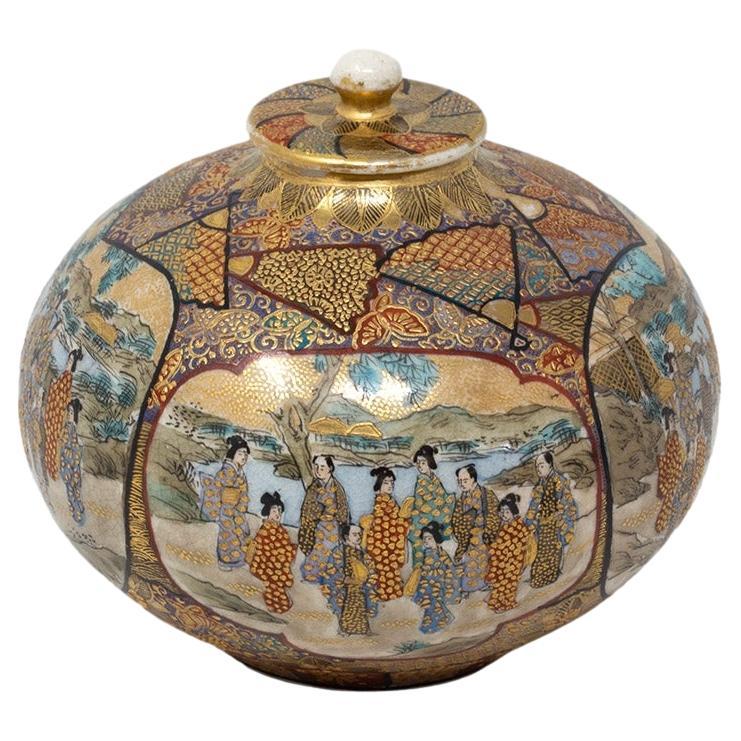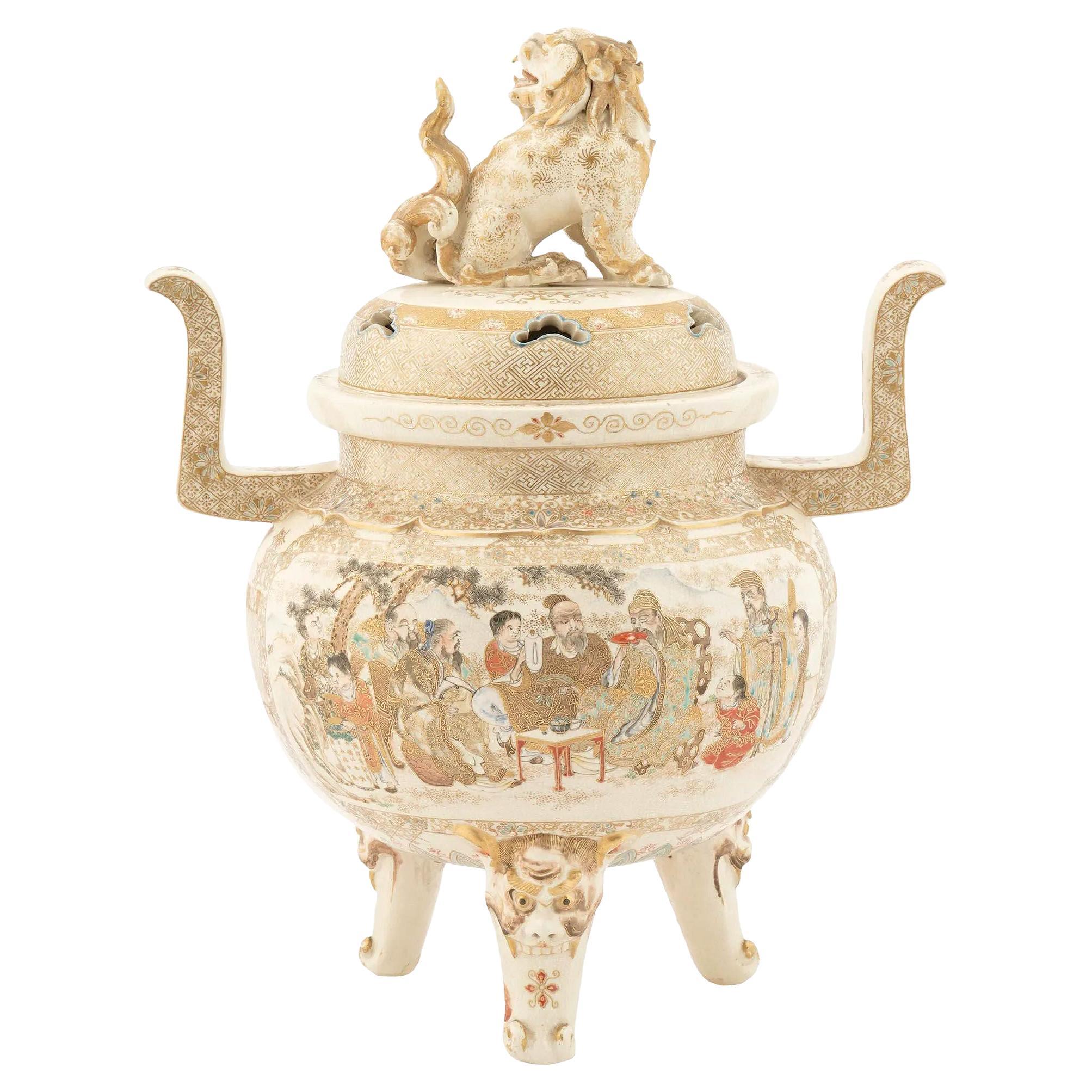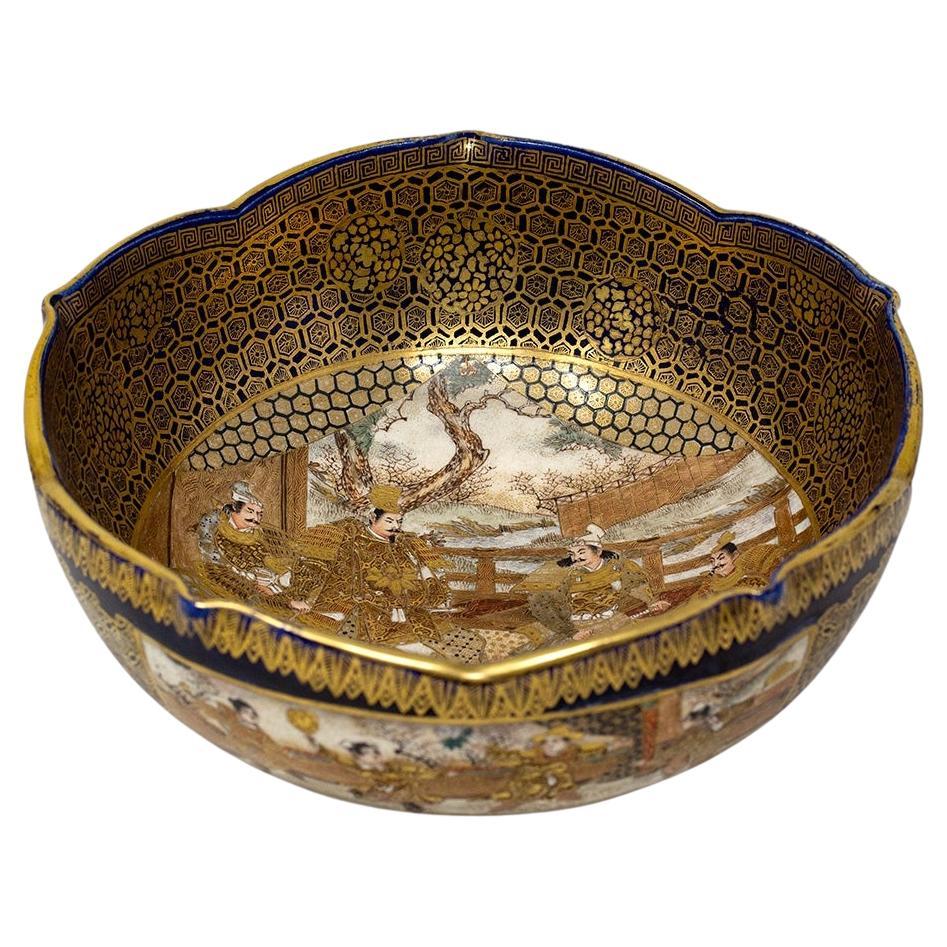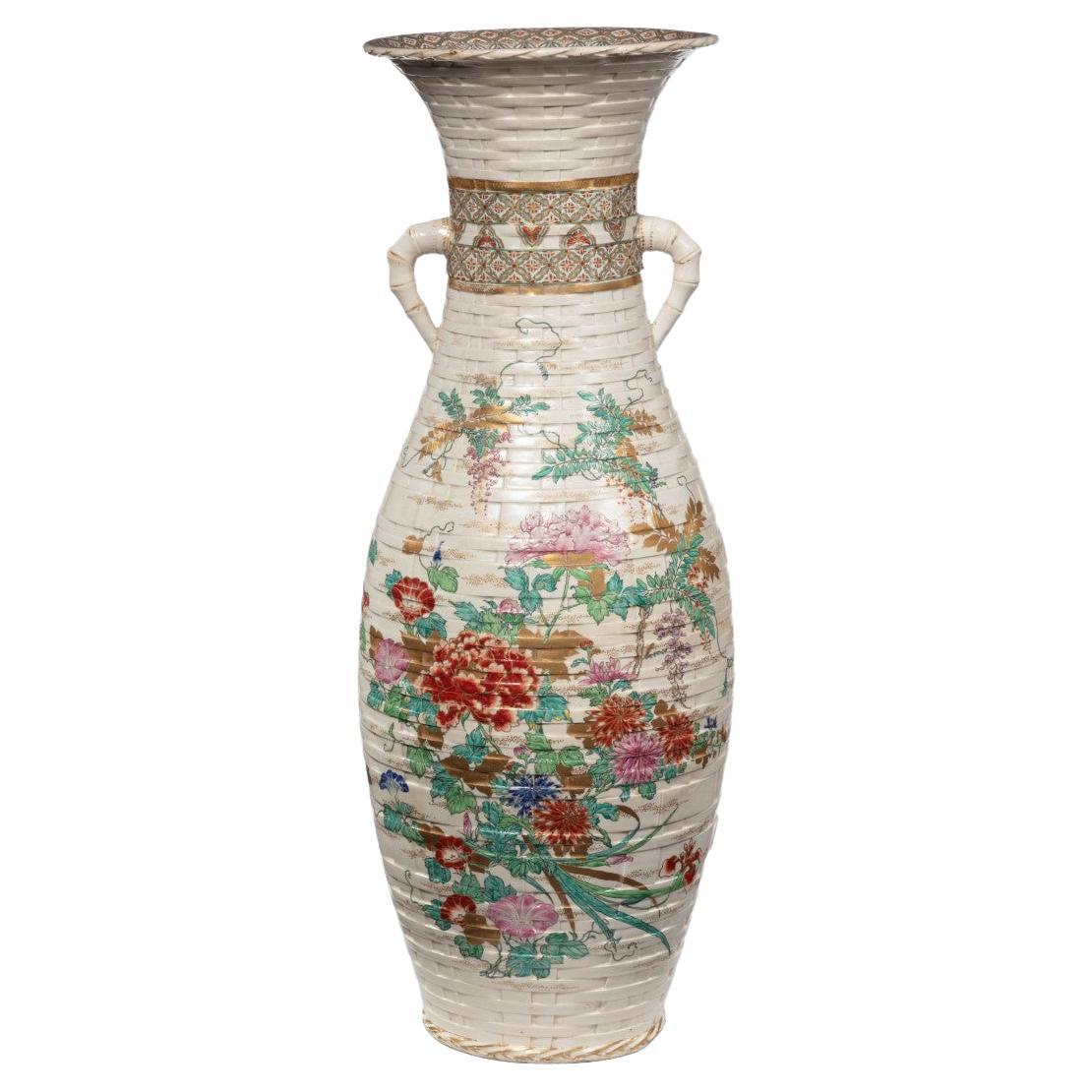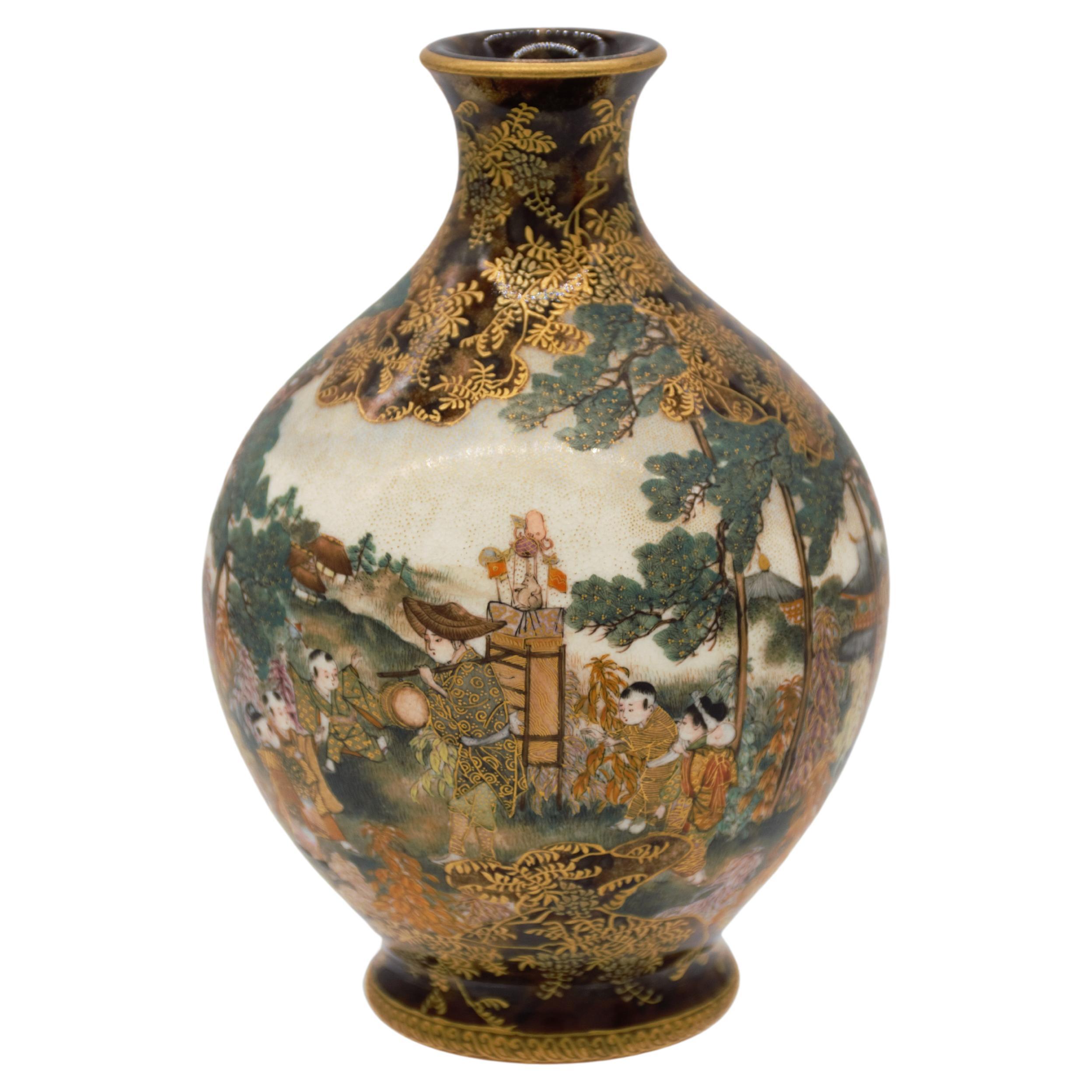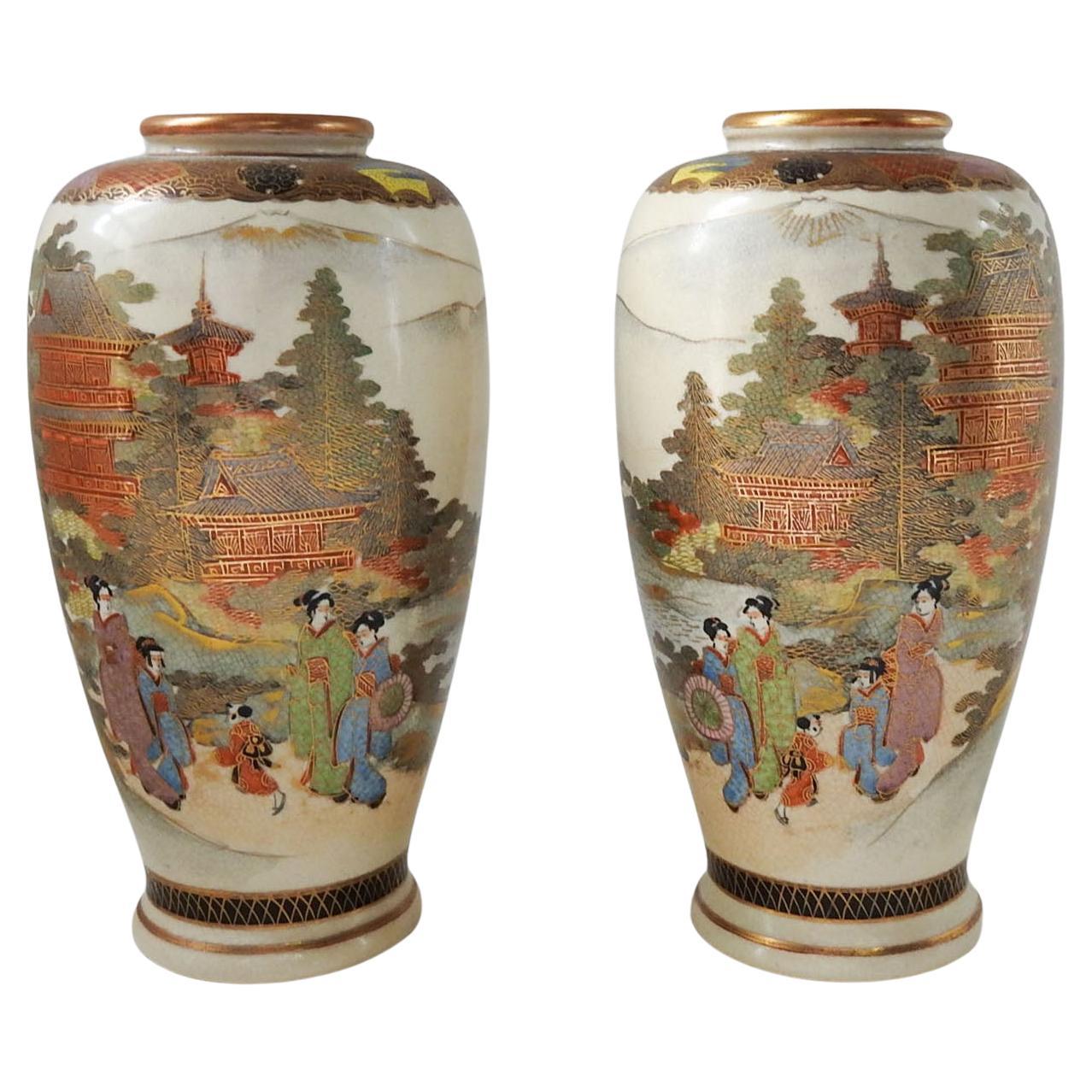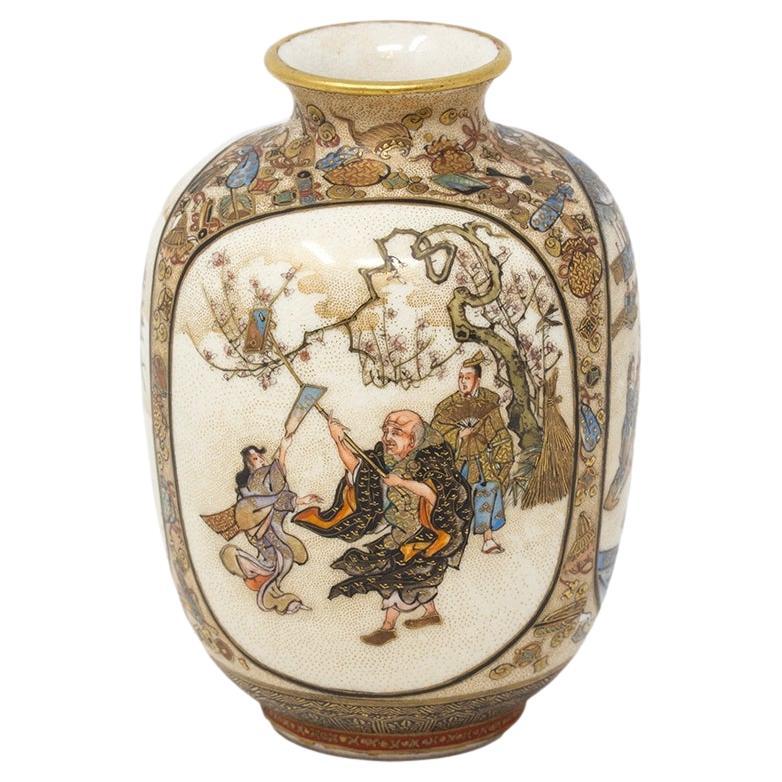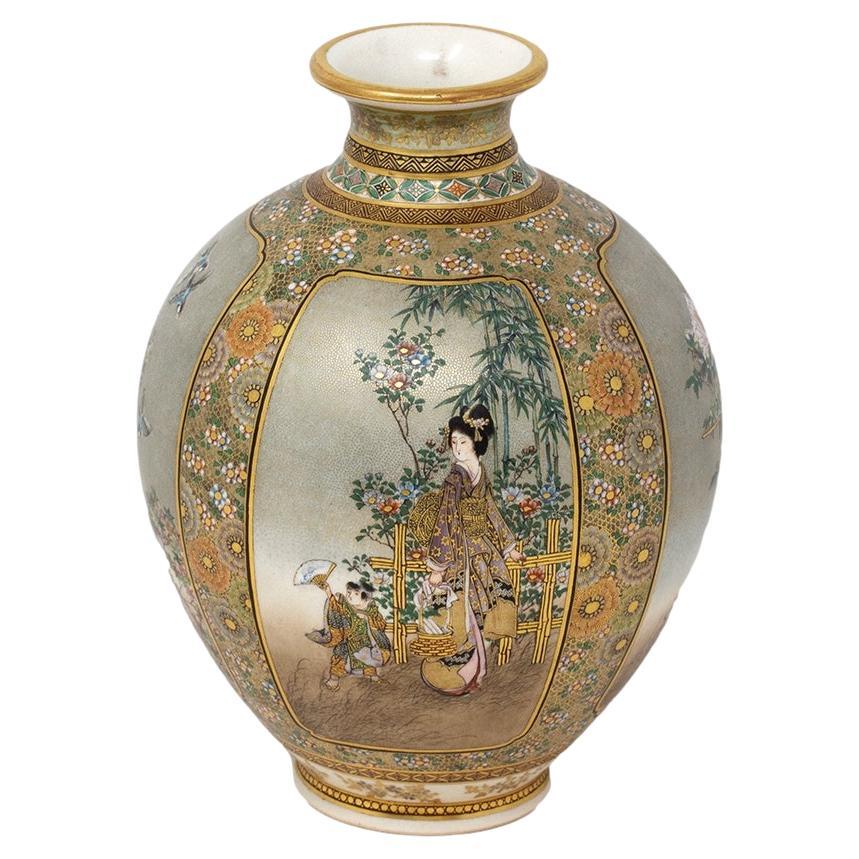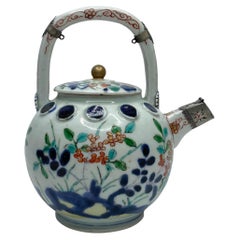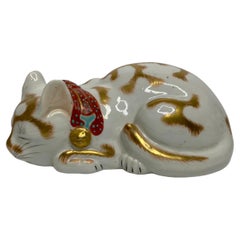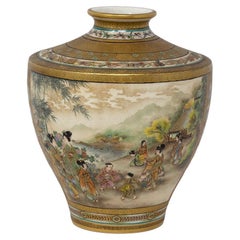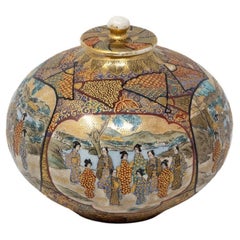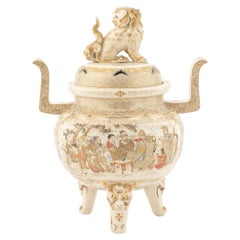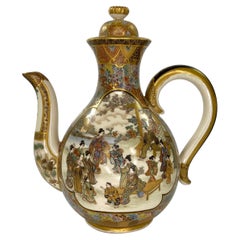
Satsuma Pottery Sake Ewer, Ryozan Okamoto, Meiji Period
View Similar Items
Want more images or videos?
Request additional images or videos from the seller
1 of 17
Satsuma Pottery Sake Ewer, Ryozan Okamoto, Meiji Period
About the Item
- Creator:Master Ryozan (Artist)
- Dimensions:Height: 8.47 in (21.5 cm)Width: 7.49 in (19 cm)Depth: 4.73 in (12 cm)
- Style:Meiji (Of the Period)
- Materials and Techniques:Earthenware,Fired
- Place of Origin:
- Period:
- Date of Manufacture:circa 1890
- Condition:Wear consistent with age and use.
- Seller Location:Gargrave, GB
- Reference Number:1stDibs: LU4397123973672
About the Seller
5.0
Vetted Seller
These experienced sellers undergo a comprehensive evaluation by our team of in-house experts.
Established in 1982
1stDibs seller since 2019
44 sales on 1stDibs
Typical response time: 1 hour
More From This SellerView All
- Imari sake ewer, Arita, Japan, c. 1700, Edo Period.By AritaLocated in Gargrave, North YorkshireImari sake ewer and cover, Arita, Japan, c. 1700, Edo Period. The globular ewer, with an unusual continuous band of circular moulded bosses, and vibrantly painted with flowering plan...Category
Antique 1690s Japanese Edo Ceramics
MaterialsPorcelain
- Sumidagawa pottery Monkeys vase, Ban-Ni, Japan, Meiji Period.By Sumida GawaLocated in Gargrave, North YorkshireSumidagawa ‘Monkeys’ vase, Ban-Ni, Japan, c. 1890, Meiji Period. £1,350.00 Sumidagawa pottery vase, signed Ban-Ni, Japan, c. 1890, Meiji Period. The large vase, sculpted with an amu...Category
Antique 1890s Japanese Meiji Ceramics
MaterialsPottery
- Kutani porcelain cat, Japan, c. 1900, Meiji Period.By Kutani StudioLocated in Gargrave, North YorkshireKutani porcelain okimono of a cat, c. 1900. Meiji Period. £490.00 Kutani porcelain okimono, Japan, c. 1900. Meiji Period. Finely modelled as a sleeping cat, its hair delineated in g...Category
Antique 1890s Japanese Meiji Ceramics
MaterialsPorcelain
- Kutani porcelain Green Pheasant, Japan, Meiji Period.By Kutani StudioLocated in Gargrave, North YorkshireKutani porcelain okimono of a Japanese Green Pheasant, Japan, Meiji Period. The pheasant modelled, perched upon a large gnarled branch. Decorated in typically vibrant enamels, and he...Category
Antique Early 1900s Japanese Meiji Ceramics
MaterialsPorcelain
- Imari ‘Black Ship’ bowl and cover, Japan, Meiji Period.By Imari PorcelainLocated in Gargrave, North YorkshireA Japanese Imari porcelain ‘Black Ship’ bowl and cover, Meiji Period. The bowl hand painted to one side with a large sailing ship with Dutch flags, whilst t...Category
Antique 19th Century Japanese Meiji Ceramics
MaterialsPorcelain
- Imari porcelain Carp dish, Arita, Japan, c. 1890, Meiji Period.By AritaLocated in Gargrave, North YorkshireJapanese Imari porcelain Carp dish, Arita, c. 1890, Meiji Period. The canted rectangular dish, moulded to the centre with a large carp, in low relief, hand painted in typical Imari c...Category
Antique 1890s Japanese Meiji Ceramics
MaterialsPorcelain
You May Also Like
- Japanese Meiji Period Satsuma Vase Painted by Ryozan for the Yasuda CompanyLocated in Newark, EnglandThe vase of slightly bulbous form potted with a tapered body reaching a slightly pinched neck and rolled top rim is beautifully decorated with two large scenes. The first scene features a mountainous region with a river flowing through the centre with beautiful wash colours of green. A Bamboo plant can be seen hanging over the left of the scene with two Geishas walking amongst the flowers with children running around them. Further Geishas can be seen to the far right of the vase in front of a traditional Japanese building. The second scene an upstream version of the first with spectacular pink cherry blossom amongst a central river breaking the land in two with further figures with children. The scenes bordered by a strip gilt border featuring alternating images two depicting a Minogame. The shoulder of the vase is beautifully finished with complex rings of geometric scrolling borders with shades of teal, butterflies and one hundred treasures style decoration above gilt cartouches of the imperial style Kiku (chrysanthemum). The vase is signed to the base Dai Nippon, Kyoto Tojiki, Goshi Kaisha, Okamoto Ryozan 京都陶, 磁器合, 資会社,岡曰本亮山 with the Yasuda Company Mark (Yasuda Kyoto Tojiki Goshikaisha) which translates as the Yoshida Kyoto Ceramic Joint Stock Company and dates to the Meiji Period (1868-1912) circa 1900. Yasuda Company was founded in 1896 by Gensei and Yoshizaburo Yasida two brothers from Kyoto. The companies full name is Yasuda Kyoto Tojiki Goshikaisha which translates to Yoshida Kyoto Ceramic Joint Stock Company. They were a manufacturer and dealership based in Kyoto and active during the second half of the Japanese Meiji-era specialising in decorative works including Cloisonne and Ceramics, today they are best-known for their Satsuma pottery wares. The company gained a good reputation and great respect for their high quality works which were executed by some of the best artists of their time. As well as Okamoto Ryozan, they worked with celebrated artists such as Sozan, Kizan, Hozan and Seikozan. Ryozan was born Nakamura Tatsunosuke and was trained by the legendary 10th generation potter Nishimura Zengoro who himself, used the artist’s name “Ryozan”. After Nishimura’s death in 1851, Nakamura Tatsunosuke adopted the name “Okatomo Ryozan” in order to pay tribute to and honour his master. Ryozan went on to become the Head Artist at the Yasuda Company of Kyoto where he confirmed his reputation as one of the great Satsuma artists of the generation. Minogame 蓑亀 are long-lived turtles with long strands of algae growing from their shells. The algae drapes down from their shells and resembles a farmer’s straw raincoat (mino) from which they get their name. They are considered very auspicious creatures throughout East Asia. The long algae on their backs is reminiscent of the long beards of sages and wise men. Because of this and their long life span, they are a symbol of long life and prosperity and appear frequently in paintings, sculpture in Japanese culture. The minogame is a symbol of longevity and happiness and has an important role in the well-known legend of Urashima Taro...Category
Antique Early 1900s Japanese Meiji Ceramics
MaterialsCeramic, Earthenware, Pottery
- Japanese Meiji Period Satsuma KoroBy KinkozanLocated in Newark, EnglandBulbous Form From our Japanese collection, we are delighted to offer this Japanese Meiji Period Satsuma Koro. The Japanese Satsuma Koro of rounded form neatly potted with a small to...Category
Antique Early 1900s Japanese Meiji Ceramics
MaterialsCeramic, Earthenware, Pottery
- Japanese Meiji Period Satsuma Tripod CenserLocated in New York, NYVery fine quality Japanese Meiji period Satsuma tripod censer with a foo dog finial. wonderful painting quality.Category
Antique Late 19th Century Japanese Meiji Ceramics
MaterialsCeramic
- Meiji Period Diminutive Satsuma Baluster Vase.By SatsumaLocated in Vero Beach, FLMeiji Period Diminutive Satsuma Baluster Vase. This Japanese Satsuma vase from the late Meiji period is hand painted and gilt decorated with a Japanese landscape in exquisite detail...Category
20th Century Japanese Meiji Ceramics
MaterialsPorcelain
- Japanese Meiji Period Satsuma Bowl KinkozanBy KinkozanLocated in Newark, EnglandFrom our Japanese collection, we are delighted to offer this Japanese Meiji period Satsuma Bowl by Kinkozan. The earthenware bowl with pinched rim extensively decorated on both the exterior and interior. The bowl with a cobalt blue base glaze decorated to the borders with gilt shippo-tsunagi (linked-cash) with scattered medallion roundells. Around the exterior two elongated scenes are featured, one with boys playing games in a courtyard with the other featuring seated scholars in full dress both with raised enamel decoration. The interior features a central scene with Samurai warriors in training fully armoured with swords in a courtyard with landscapes scenes to the background. The central scene bordered by further stylised shippo-tsunagi type decoration with a greek key rim border. The bowl signed to the base Kinkozan dating to the Meiji Period (1868-1912) circa 1900. Shippo-Tsunagi (linked-cash) or seven treasures, is a traditional Japanese geometric pattern that combines four ellipses in a circle. These ellipses repeat outward to then create more circles, symbolising eternal peace and happiness. Kinkozan the Kinkozan family have been associated with pottery dating back to 1645. They went on to become the largest producer of Satsuma ware by one individual company, from the end of the 19th century until 1927 after which the factory closed. By the 1850s Kobayashi Sobei (1824-84), Kinkozan Sobei...Category
Antique Early 1900s Japanese Meiji Ceramics
MaterialsCeramic, Earthenware, Pottery, Faux Leather
- Antique Japanese Meiji Period Satsuma Pottery Bowl Imperial Figures Kizan 1890Located in Portland, ORA very fine antique Japanese Meiji period Satsuma pottery bowl, circa 1890. The bowl having a lobed rim and finely decorated & gilt to the outside with a 'thousand flowers' decoratio...Category
Antique 1890s Japanese Meiji Ceramics
MaterialsPottery
Recently Viewed
View AllMore Ways To Browse
Satsuma Pottery
Sake Pottery
Ewer Floral
Satsuma Figures
Antique Satsuma Pottery
Antique Japanese Satsuma Pottery
Pottery Ewer
Satsuma 1
Black Satsuma
Kyoto Satsuma
Japanese Ewer
Ryozan Satsuma
Antique Famille Rose
Chinese Famille Rose Porcelain
Japanese Export
Chinese Export Porcelain 20th
Chinese Peony
Antique Chinese Iron
